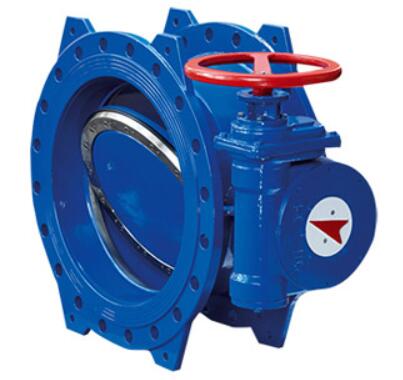Butterfly valves are a family of quarter-turn rotational motion valves that are used in pipelines to shut-off flow. It is often said that butterfly valves can be used to regulate the flow. However, we do not recommend doing this, as it can damage the valve disk and have a negative effect on the sealing properties.

A butterfly valve is a type of quarter-turn valve used to regulate and isolate fluid flow in pipelines. Known for their compact design, lightweight structure, and cost-effectiveness, butterfly valves have become a preferred choice in various industries, particularly in water supply systems. This article provides a comprehensive insight into butterfly valves, their functionality, advantages, and critical applications in the water supply sector, helping procurement managers and engineers make informed decisions.
Understanding Butterfly Valves
A butterfly valve consists of a circular disc (butterfly) mounted on a rotating shaft. When the valve is fully closed, the disc blocks fluid flow, while a 90-degree rotation fully opens the valve, allowing unrestricted passage. This design enables precise flow control with minimal pressure drop, making butterfly valves ideal for large-diameter applications.
Key Components:
Valve Body: Houses the internal components and connects to the pipeline.
Disc (Butterfly): Rotates to regulate fluid flow.
Stem: Transfers motion from the actuator to the disc.
Seat: Provides a tight seal to prevent leakage.
Actuator: Controls the valve operation, available in manual (lever/gear), pneumatic, or electric models.
Why Choose Butterfly Valves for Water Supply Systems?
Butterfly valves are widely used in water distribution, treatment plants, and wastewater management due to their numerous advantages:
1. Cost-Effectiveness
Compared to gate and ball valves, butterfly valves offer a lower total cost of ownership. Their lightweight design reduces material costs, and their simple mechanism minimizes maintenance expenses.
2. Compact and Lightweight Design
Butterfly valves are significantly lighter and more compact than alternative valve types, making installation easier and reducing space requirements in confined areas.
3. Efficient Flow Control
The valve’s quarter-turn operation allows for rapid opening and closing, ensuring efficient control over water flow, even in emergency situations.
4. Durability and Long Service Life
High-quality butterfly valves, especially those with stainless steel or coated discs, can withstand harsh environmental conditions and chemical exposure in water treatment processes.
5. Minimal Pressure Loss
The streamlined design of butterfly valves ensures minimal flow resistance and pressure drop, enhancing overall system efficiency.
Applications of Butterfly Valves in Water Supply Systems
1. Water Treatment Plants
Butterfly valves play a crucial role in controlling the flow of raw and treated water in municipal and industrial treatment plants. Their ability to handle large volumes of water makes them indispensable in filtration, chlorination, and sedimentation processes.
2. Water Distribution Networks
Municipal water supply systems use butterfly valves to regulate and direct water flow in pipelines. Their quick operation ensures effective distribution and emergency shutdown when required.
3. Pumping Stations
Pumping stations require precise flow regulation, and butterfly valves provide an optimal solution with their efficient throttling capabilities. They help maintain steady water pressure and prevent backflow issues.
4. Dams and Reservoirs
In large-scale water storage systems, butterfly valves help control water release and manage flood control mechanisms, ensuring efficient resource utilization.
5. Industrial Water Supply
Industries such as power plants, chemical processing, and food and beverage manufacturing rely on butterfly valves for handling cooling water, processing fluids, and wastewater discharge.
Market Trends and Industry Insights
According to industry reports, the global butterfly valve market is projected to grow at a CAGR of 6.3% from 2023 to 2030, driven by increasing demand for efficient water management solutions and rising urbanization. The Asia-Pacific region, particularly China and India, is witnessing significant investments in water infrastructure, boosting the demand for high-quality butterfly valves.
Selecting the Right Butterfly Valve for Your Needs
When choosing a butterfly valve for water supply applications, consider the following factors:
Material: Opt for stainless steel, ductile iron, or epoxy-coated valves for corrosion resistance.
Pressure Rating: Ensure the valve meets the required pressure standards for your application.
Actuation Method: Choose between manual, electric, or pneumatic actuators based on operational needs.
Sealing Performance: Look for valves with high-quality elastomer seats to prevent leaks.
Conclusion
Butterfly valves are essential components in modern water supply systems, offering efficient flow control, durability, and cost-effectiveness. As a leading manufacturer, we provide high-quality butterfly valves designed to meet the rigorous demands of water distribution and treatment applications. Contact us today to explore our product range and find the ideal solution for your project.

